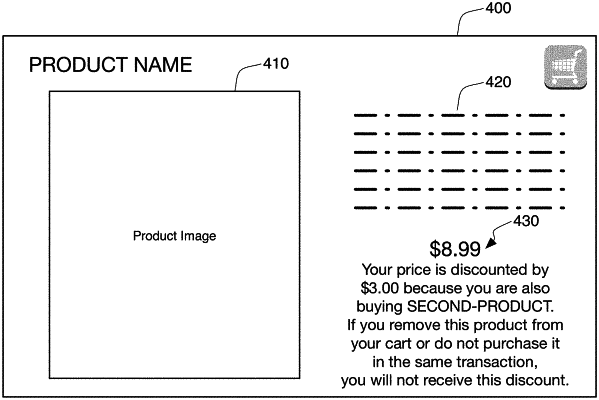| CPC G06Q 30/0222 (2013.01) [G06F 12/123 (2013.01); G06Q 30/0635 (2013.01); G06F 2212/1041 (2013.01)] | 20 Claims |

|
1. A system comprising:
a) a computer processor;
b) data communication to a customer data source, a cart content data source, and a pricing data engine;
c) a first data cache, a second data cache, and a third data cache; and
d) programming operating on the computer processor, the programming operating the computer processor to:
i) receive a product price request comprising a first product identifier identifying a product, and a first user identifier;
ii) request customer information for the first user identifier from the customer data source;
iii) receive first customer information from the customer data source;
iv) store the first customer information in the first data cache to allow for later retrieval of the first customer information without accessing the customer data source;
v) request cart content data for the first user identifier from the cart content data source;
vi) receive user-specific cart content from the cart content data source, the user-specific cart content comprising a plurality of cart product identifiers indicating products in an electronic shopping cart related to the first user identifier;
vii) store the user-specific cart content in the second data cache to allow for later retrieval of the user-specific cart content without accessing the cart content data source;
viii) request pricing data for the first product identifier and for the plurality of cart product identifiers from the pricing data engine;
ix) receive first pricing data from the pricing data engine, the first pricing data comprising a first plurality of prices for the first product identifier, with a discounted price in the first pricing data being associated with a trigger condition, the first pricing data further comprising prices for the plurality of cart product identifiers including a bundled discount requiring purchase of the product;
x) store the first pricing data in the third data cache to allow for later retrieval of the first pricing data without accessing the pricing data engine;
xi) determine a first price for the product based on whether the first customer information meets the trigger condition; and
xii) transmit the first price and the bundled discount in response to the product price request.
|